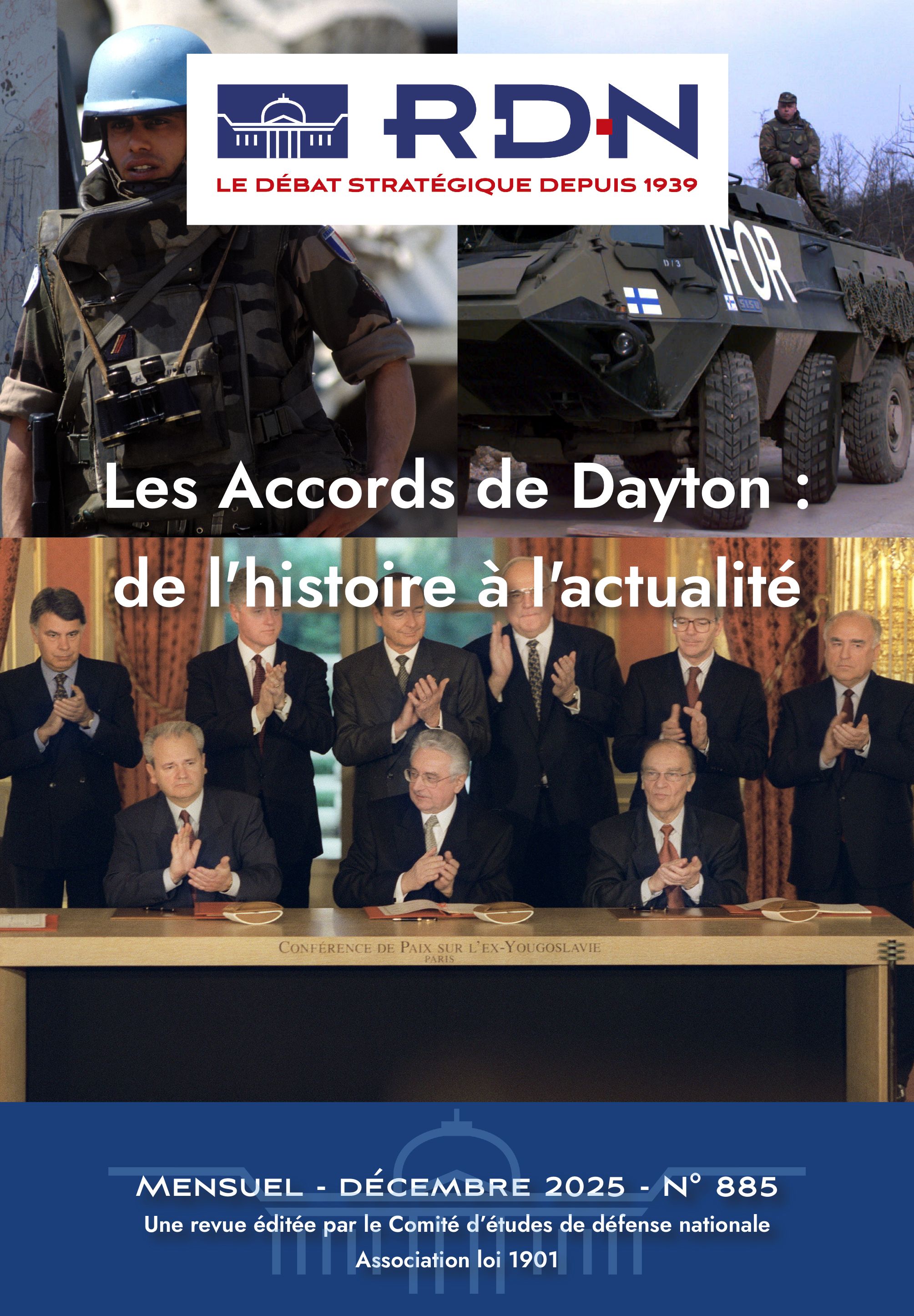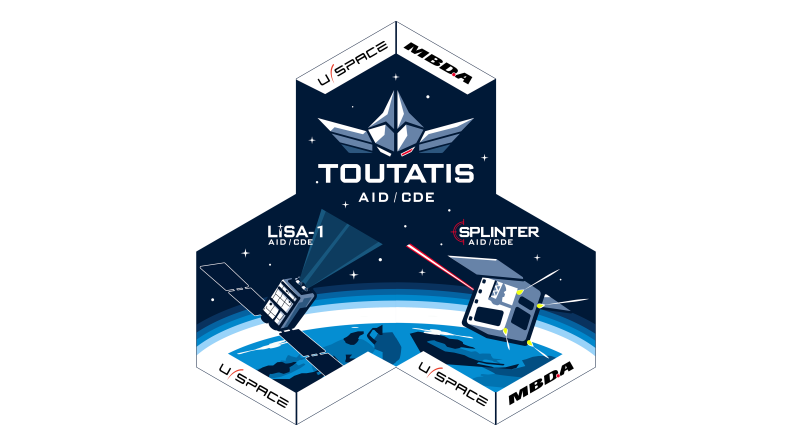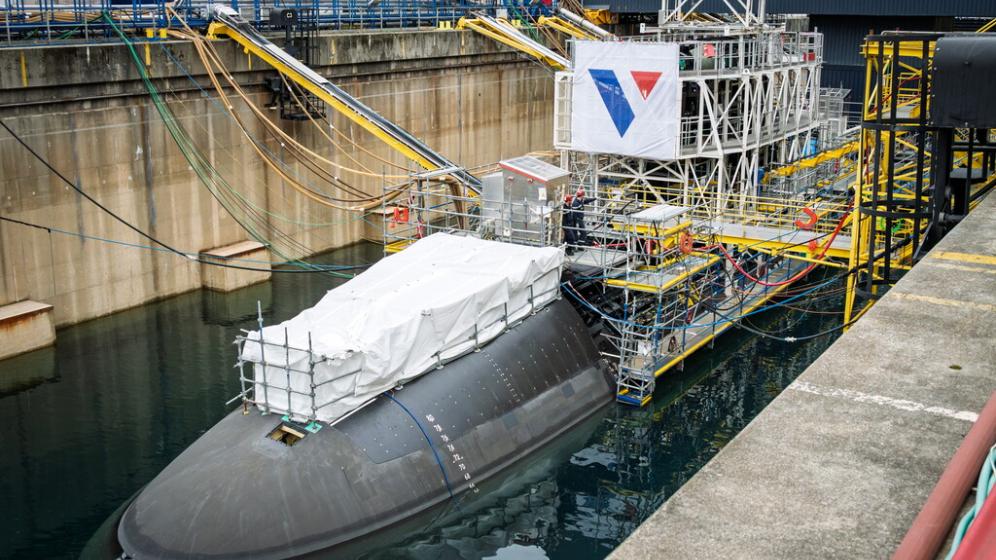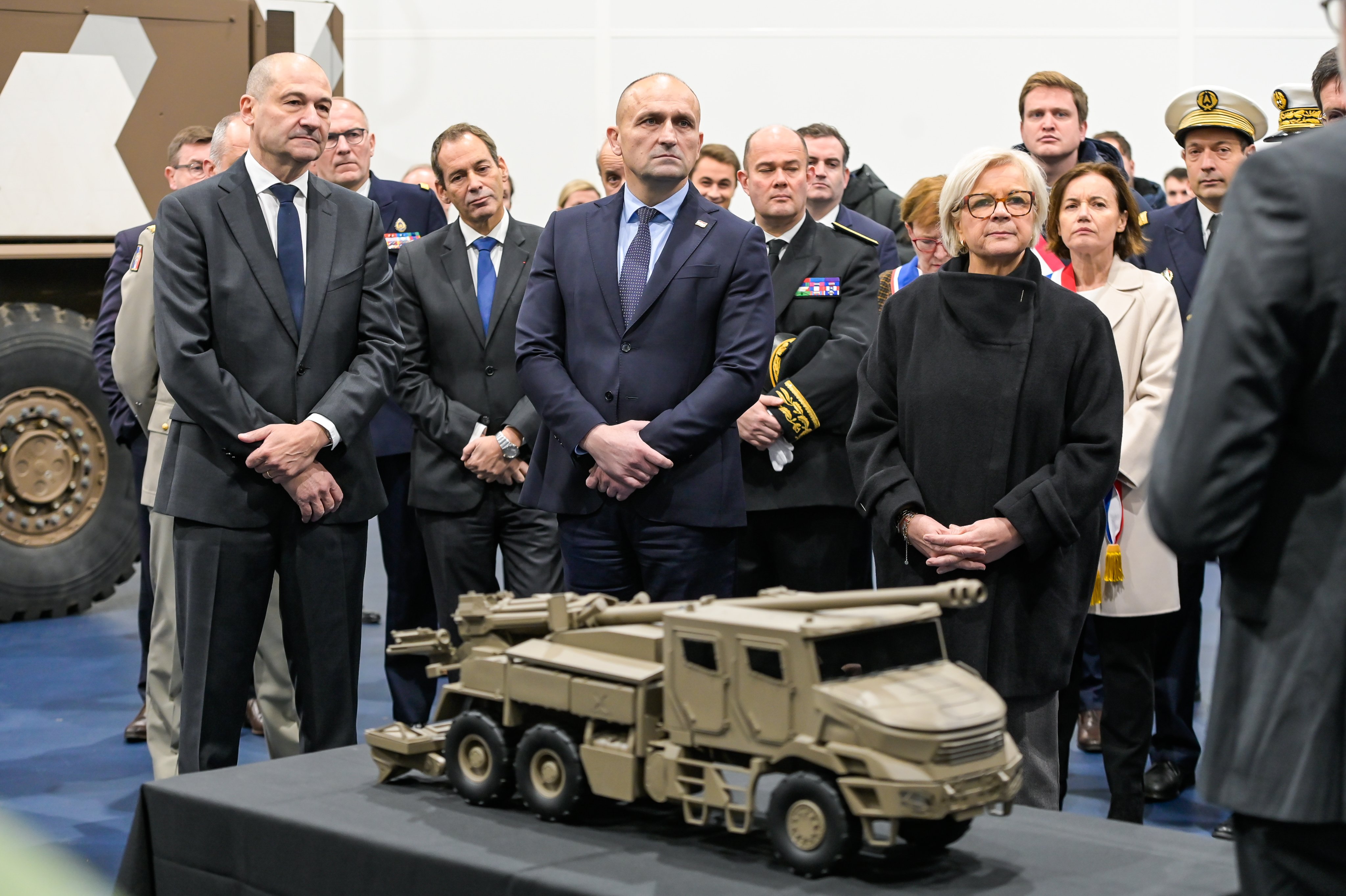An air force is a powerful tool: in Operation Serval in Mali, the French Air Force has fully demonstrated this fact through its reactivity, command and ISR capabilities, and its strategic and tactical mobility.
Serval: an Exemplary French Air Force Operation
The Serval is a mid-sized African wildcat. The feline is blessed with a long stride; it can leap more than three metres with precision from a standing start, generating so much force that it stuns or even kills its prey on impact. It has very good hearing, conceals itself in the bush, and can listen and observe while itself remaining unseen. It is a formidable killing machine which overpowers its prey, and it surpasses other predators in its qualities as a hunter. One could not dream up a more descriptive codeword for an operation in which the French Air Force (FAF) has so well demonstrated the same characteristics.
Operation Serval was launched by decision of the President of the Republic on 11 January 2013. It resulted from a certain number of options which had been taken up by the FAF, allowing them to be tested against strategic and operational reality. This operation highlighted four fundamental, intimately linked capabilities which frame the FAF’s aptitude for combat, point to its future development, and give it the strategic reach which makes it the pivot of our defence capability. These are:
- Immediate reaction capability;
- A structure of command and operations working in real time;
- Continuity of surveillance and intelligence gathering;
- Strategic mobility.
Immediate reaction
Analysis of the Mali operation underlines the first of the FAF’s fundamental capabilities: its immediate reaction capability. This is even more a key quality when, in operations, immediacy becomes the normal when the political/news/public opinion cycle becomes foreshortened. The first demonstration of this was by the Mirage 2000D detachment stationed at N’Djamena in Chad. Having been first alerted of the Presidential decision during the morning of 11 January, it carried out its first strike on enemy objectives the same night. Similarly, although the fighter-bomber Squadron 1/7 (Provence) at Saint-Dizier was not on alert status on that day, on 13 January (36 hours after the Presidential decision), its Rafales destroyed more than 20 targets in the centre of Mali with pinpoint precision. This mission of more than 4,000 km lasted 9 hours and 35 minutes, the longest ever raid by French fighter-bombers. In three days some forty objectives were destroyed: they included weapon systems, command centres, training and logistic bases, and they deeply demoralised the enemy.
This operational excellence was only made possible by the quality of our FAF serving men and women, who are trained to be reactive and overcome difficulties. While the prowess of the various teams is impressive, it needs to be borne in mind that reactivity is a function of the slowest element involved. As on 19 March 2011, the FAF showed that it is a finely tuned instrument whose air bases are a particularly efficient combat organisation. It demonstrated exemplary integration with our system of defence bases, whose function is operational support. The air base was where the lines of operational support and technical support were melded; it operated under the base commander who had all decision-making responsibility. It is an air base’s 24-hour operating cycle which allows it to switch instantly from peacetime operation to crisis management mode; it is also the base which supports its aircraft when they are detached elsewhere.
Finally, it was also because FAF men and women benefit from individual training and continuous activity. Their standards of training combined with regular exercises are high enough for procedures to be thoroughly learned and practised properly, for reflexes to be acquired, and for agility to be developed over a wide range of activities. The key to all this is sufficient flying hours to allow crews to develop the expertise needed for complex operational missions. As the beneficiaries of realistic training and 180 flying hours per year, some Rafale pilots flew their first warlike mission on 13 January. This reactivity could not be achieved just by a cyclic timetable alternating operational preparation, action and then recuperation: the aircrew activity levels and (through them) those of the entire FAF are major guarantees of efficiency.
Coherence and efficacy of command and working procedures, adapted to real operations
The skill of rapid intervention is based on the FAF’s fundamental capability of exploiting the coherence and the efficacy of its command system and working procedures. This is even more fundamental in operations such as Serval, which encompass operational components of all nature wherever they happen to be, and which are set in motion at short notice with a very short decision cycle. For its action to be fully effective and responsive in a joint force operation, the FAF has to master a complex and reactive environment. It needs a chain of command and standardised procedures capable of interacting in real time with all involved; this leads to continuity of planning and operations based on a common view of what is needed.
The first air missions of Serval, mounted directly by CPCO, were planned and controlled by the JFAC AFCO (Joint Force Air Component de l’Afrique centrale et de l’Ouest) recently established at N’Djamena to direct those air resources pre-positioned in Africa. This command structure greatly eased the work of CPCO since it permitted an immediate launch of air operations and the pre-planning of follow-on strikes.
The concept of operations was the responsibility of the Air Officer commanding the air component, who was also the air adviser to Comanfor Serval. He was responsible for the organisation of the airspace in the zone of operations: he took part in the joint service allocation of air resources to tasks, and he was responsible for the planning, programming and execution of the overall air campaign, integrating all air resources.
This command architecture is even more important when coordination of a variety of air resources is needed, operating diverse missions simultaneously in an operational zone. In- theatre about one hundred missions were launched daily, operating round the clock: these included deep penetration, reconnaissance, surveillance, monitoring, fire support, parachute operations, tactical and strategic air transport, air-to-air refuelling, combat and transport helicopters.
The role played by the National Air Operations Centre (CNOA) in Lyon should also be mentioned. Serval demonstrated that the FAF can now look at the planning and conduct of air operations in a new way. The technical resources which are being steadily acquired by Lyon (essentially SIC and satellites, SATCOM, HF, IP, LDT and POLA), and the skills available on site (planners, controllers, intelligence officers, experts in tactical data linkage, radio and IT specialists etc), mean that the operational units of CDAOA Lyon (JFAC, CNOA and CRA), reinforced by other elements drawn from the entire FAF, are now entirely capable of planning, programming and conducting air operations on a world-wide basis, both from French soil and elsewhere.
The projection into the theatre of E-3F, point to point links using SATCOM, HF and CHAT IRIDIUM, the installation of Link 16 equipment (MIDS-JRE), and the ability to receive Harfang (FMV) video on site give the Lyon C2 centre the real-time supervision capability needed to direct air operations.
It is particularly instructive to look at the challenge represented by the first-ever offensive operation carried out by Rafales on 13 January, which was mounted directly from their base in Saint-Dizier. It would have been impossible to mount it at such short notice without an operations centre such as Lyon where the sortie was planned to the last detail, and where tactical control was exercised right up to the final debriefing at N’Djamena. The principle of ‘reach back’ using Lyon has demonstrated its full value ever since the start of the operation. It is a continuing process: the basic principle is that air campaign planning takes place in Lyon, while operations are run from N’Djamena.
Finally, so as to exploit to the maximum air power’s trump cards of quick reaction and flexibility of use, the command and control network must also be able to change objectives in real time.
When the enemy makes only fleeting appearances it is essential to reduce the detection-to-strike reaction time to the minimum. We must be able to network ISR assets (Intelligence, surveillance and reconnaissance) with appropriate C2 arrangements and strike assets. In a theatre where distances are so great, the availability of an AWACS is a crucial factor. For example, on 19 February French ground reconnaissance elements in the Massif de l’Adrar (some fifty kilometres south of Tessalit) were engaged by terrorists. A Mirage 2000D patrol was in the area, armed for close air support missions: it attacked rapidly, destroying two heavy machine guns. Equally, it is not infrequent for the CNOA to change the objectives of reconnaissance missions in real time. None of this is possible without well-proven procedures, reliable technical capabilities and well-trained personnel.
In this respect the SIC manœuvre is integral to the exercise of air power because it must be perfectly in phase with the campaign objectives in order to be able properly to dimension both the nature and the flux of data. The data source can be one or more of ground-based radio, satellite or IT, and the data itself may be in the form of text, image, video or voice.
Less visible, but equally essential support for air operations must be based on a reliable technical and logistic command structure. This has also to synchronise perfectly with the air campaign’s objectives in order to achieve maximum availability of the resources committed.
The need for permanent surveillance and intelligence data
A third fundamental capability of air operations derives from the acquisition and monitoring resources it must have to support operations effectively; this applies to joint as well as to air operations. This involves the airframes themselves, the offensive systems, the objectives listed in each zone of engagement, the coordination of resources in both time and space, and the ground and air communications links needed. The result is a mass of data from many types of sensor, ranging from humans to satellites, and includes that from aircraft and drones. For the 13 January mission, for example, the weapons programming and the data needed to designate the targets ordered by the CPCO was arriving in Saint-Dizier until late in the night, and was supported by target dossiers which had to be produced under severe time constraints.
The organisation was initially supported by a troika of satellite/FICR/ATI, rapidly supplemented by the deployment of Harfang drones. The processing of the data collected was designed to go beyond simple sequential processing by each of the players involved; it was instead merged by real-time processing, leading to much more rapid handling of the ‘surveillance-identification-designation-launch’ cycle. A real-time capability is essential for this type of operation where targets are agile, fleeting and dispersed over vast areas, and is a major characteristic of airpower.
Fielding the Harfang drone therefore completed the operational effectiveness of the organisation, by integration of its images into the decision-making process. It has a loiter capability of 14 hours per mission over the entire zone of operations; immediate action by Rafale or Mirage 2000D combat patrols could be (and indeed were) triggered by targeting data uploaded to them in real time by the drone’s controllers. This technique is proof of a trend which has been growing year by year: the drone is fast becoming the single most essential element in all air operations and is increasingly being used prior to any strike to verify that there will be no collateral damage, a practice which is growing even when planned strikes have benefited from prior detailed analysis.
Furthermore, this theatre covers a vast area, which both reduces the loiter time of air patrols over a combat zone and evidently increases the number needed to maintain constant coverage. In the absence of AWACS, drones act as vital rebroadcast stations for information transfer between air patrols. Nevertheless, our drone capability remained notoriously insufficient, bearing in mind the size of the area to be covered and the continuous surveillance that was needed. The waste of time due to long transit flights from Niamey would have been much reduced had we been able to field a few MALE drones acting in concert; the coverage would also have been better, and we would have been able to deal with sudden emergencies, or a new task such as the recent French hostage crisis on the Nigeria-Cameroon frontier.
Strategic mobility
The fourth fundamental capability is the strategic projection capability whose importance is constantly being emphasised in this theatre the size of Europe, and 4,000 km from France. In 1946 General Géradot, the then Chief of Air Staff, remarked that ‘…transport aircraft are the indispensable partners of fighter aircraft if we want the latter to be strategically mobile’. While at the time this assertion applied only to the FAF, it is now obviously relevant to all our armed forces.
It is only the FAF which can give France a true strategic capability and respond to the major logistic and operational challenges involved. During the first five weeks of Operation Serval France projected some 19,000 tons of materiel into the theatre: this is more than was repatriated from Afghanistan over a whole year. The scope of this logistic feat should not be underestimated. While the FAF is currently organised to project joint transit capabilities and the mounting of overseas detachments in a modular way, only a true strategic air transport capability will allow the logistic chain to function properly in what is such a challenging scenario in terms both of time and range.
Similarly, the missions with which our combat aircraft are tasked are long, multiple and long range. They require major air-to-air refuelling capabilities: this operation saw the deployment in-theatre of more than half our C135 fleet. This success should not be allowed to hide the limiting factor imposed by the relative unreliability of these tankers; their advanced age (some 19 years) brings with it the permanent risk of capability failure, making it urgent to bring MRTT into service as soon as possible.
Furthermore, we need to keep in mind a simple rule learned from the Kosovo crisis, which is that the number of tankers available has a direct relationship with the number of combat sorties that can be flown. Our shortcomings in this field have constrained us (as in Libya) to have to rely on American assets since the end of January. Even so, this particularly valuable help is still not enough to meet all our needs. During the ground action of 19 February, for example, a Mirage 2000D patrol had to quit the combat zone before disengagement because the tanker was no longer able to carry out its task. The arrival of another combat air patrol from Bamako was made possible only by the arrival of a further tanker on its orbit; our troops had no close air support for several hours.
The entry into service of A400M and MRTT will therefore represent a step change. Not only will our airlift capability be significantly increased, but also our speed of projection and the use of air transport as a whole will both be improved. Bamako is currently a choke point which slows down logistic activity due to the saturation of the base platform. The result is that long and slow-moving convoys have to be organised to deliver materiel to the combat zone, some 350 km away. An air bridge using A400M could have delivered cargo to airheads much closer to the zone of operations such as Mopti, Timbuctou or Gao, allowing us to concentrate our forces several days earlier than we did.
Furthermore, the use of this aircraft would have much simplified intra-theatre logistics, which are complicated today by the need to tranship cargoes on the airfields at Bamako, Niamey, Dakar and N’Djamena: 26 tactical transport aircraft from 6 different nations are involved. The A400M can make a daily rotation into the theatre inside 24 hours, dividing projection time by a factor of three. Over and above this operational performance, local transit resources and the processing capability of the logistic chain are also affected, and in consequence the control of logistic flow has to be adapted.
The 13 January mission highlights the operational benefits we will be able to enjoy. Three C135 accompanied the four Rafale delivering nearly 100 tons of fuel, but at the same time they were able to carry only a very small proportion of the materiel and personnel needed to give such a detachment a 24-hour operating capability. In the near future the same task will be carried out by two MRTT, which will be able to lift the entire detachment, and two A400M, which will be capable of lifting the entire cargo load to N’Djamena in six hours. The FAF will thus be able to project a significant operational capability over some 4,000 km inside 48 hours.
Such an operation serves to remind us that strategic inter-theatre mobility is overlain on the needs of intra-theatre tactical support. The airborne assault on Timbuktu carried out on 29 January, certain aspects of which are classic, illustrates above all the way in which the projection of air power in a theatre can be switched instantly to support joint operations, contributing directly to their acceleration.
The concurrency of the requirements for mobility and support means that the formats of air projection must not be based solely on the requirements of inter-theatre projection. Furthermore, the tactical dimension also dictates that we need transport aircraft whose operational characteristics need to include the guarantee of combat-ready delivery. The tactical capabilities of the A400M, together with the militarisation of its cargo hold means that it can deliver ground force assets such as helicopters and armoured vehicles which are operational immediately on delivery into the operational zone, using unprepared airstrips.
Co-operation with allies
This campaign throws a new light on the degree of our dependence on our allies: it could not have taken place without their active cooperation. In the field of inter- and intra-theatre logistic projection (25 per cent), no less than 110 allied missions were needed. In the field of ISR the USA and the UK deployed a JSTAR, a Predator and a Sentinel R1. These two countries, with France, are alone in being capable of deploying such sophisticated assets, with such powerful military performance, at such short notice. The intimate strategic dialogue which links our three air forces contributed in great measure to easing the sharing and integration of these allied resources. This aspect was reinforced by the credibility of the FAF chain of command: it gave our partners the guarantees of coherence and security for their resources that they needed when the latter were tasked by Comanfor.
*
* *
Finally, it is useful to emphasise that at the same time that the Mali operation was taking place, the FAF’s permanent mission of nuclear deterrence continued without the slightest change, an essential condition for maintaining the credibility of this strategic function which is fundamental to the security of our country. The operational task of the strategic air squadrons, FAFs priority task, is fulfilled every single day.
Similarly, the FAF maintains the permanent airspace security posture which guarantees the sovereignty and protection of our national airspace, particularly against terrorist threats. This mission has become even more necessary since France’s policies have significantly increased the threat which looms over our national territory. The resources committed to its operational continuity have had to be reconfigured: air defence Mirage 2000s have replaced the Rafale for this task, thus allowing our most modern aircraft to be allocated to the African theatre.
Rafale’s qualities, already demonstrated in Libya, make it perfectly adapted to that continent. Its multi-role capability allows it to be tasked for both strike and reconnaissance. Its range and endurance give it a very good loiter capability over a zone where it can attack high value targets in real time or, when necessary, provide close air support to troops on the ground. Its wide range of sensors and weapon configurations give it the firepower needed to deal with a variety of targets with a maximum of precision.
To conclude, the unique properties of the FAF contributed to the rapid and significant blocking of a terrorist offensive which was particularly threatening to Mali’s integrity. This operation showed yet again that the FAF is an entirely coherent operational tool, and a major player in a military strategy whose success meets political expectations. ♦







